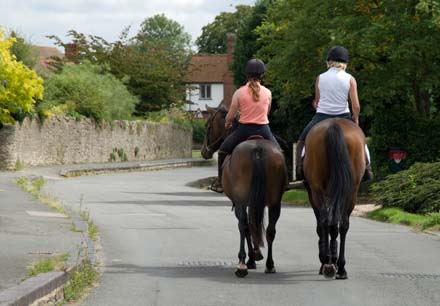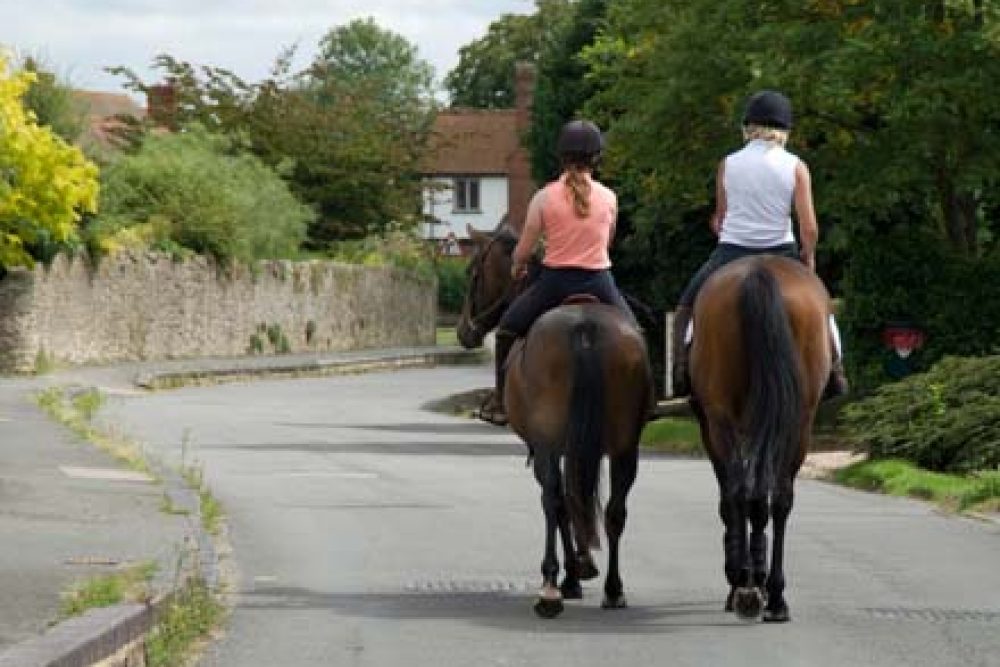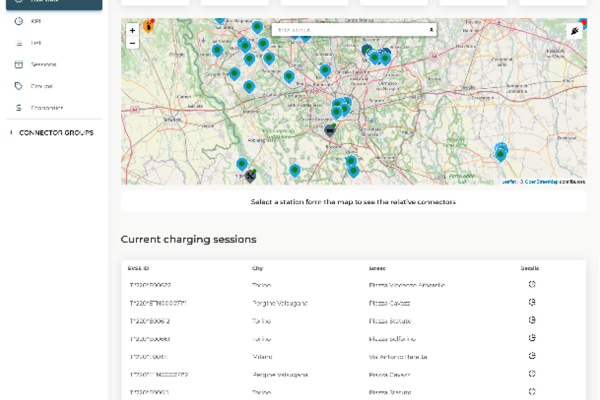
Writer: CAROLINE HOLMES, IAM
You’re in a hurry, and in front of you are two horses being ridden side by side completely ignoring the fact that you want to get past. They don’t get out of your way, they don’t speed up, and they don’t wave you on. Sound familiar?
I’m writing this with a different hat – my riding hat rather than my driving cap and goggles. Going for a cycle, a walk, or saddling up for a ride are all more popular in the summer. This means there will also be higher numbers of vulnerable road users on the road. Satnavs bring drivers into lanes they may otherwise not use, and into contact with horse riders who generally avoid mane (sic!) roads where possible.
-
Horses scare easily and are very unpredictable when they’re frightened
The really vital thing to remember is that horses are living, breathing individuals. And they are prey animals, which means they scare easily, and are very wary of the unfamiliar. This is especially true if they are young and inexperienced when they are very inclined to be flighty and unpredictable. So don’t expect them all to react in the same way, and treat them with respect and caution.
So what should you do?
When following a horse, don’t sit too close behind it – certainly no closer than you would a car. Horses have excellent peripheral vision so if possible stay slightly to the outside of your lane so they can see you, not immediately behind where they can’t. And please don’t sound the horn, unless you want to see a horse-shaped hole in the hedge, or a hoof-shaped dent on your bonnet.
Respect the rider’s decision. Horses will often ride side by side on the road. This isn’t so their owners can have a chat – it is to protect less experienced, or nervous, riders and horses in traffic. In urban areas they will do this to claim some space.
- Never drive too close behind a horse
- Never use your horn
- Horses sometimes ride side by side for a good reason
- It’s dangerous for a horse to go faster than a walk on tarmac
Similarly riders will avoid taking their horse onto grass verges where possible. Long grass can hide a multitude of hazards, including rabbit holes and litter. It is bad for a horse’s legs to go fast on tarmac, and it can also be dangerous as there’s not much traction between a smooth road surface and a metal horse-shoe. So don’t expect them to speed up to get out of your way either.
The things that worry a horse won’t necessarily be immediately apparent to you. It is easy to underestimate how scary a white plastic bag flapping in the bushes can be. Some reactions are fairly intuitive though. Large vehicles, especially with rattling, empty trailers normally go down badly, as do flapping tarpaulin sheets, and brightly coloured loads. Even an open window with loud music can be a problem.
When you get the chance to overtake, do it gently, without revving loudly. Give plenty of space – at least the width of your own vehicle – and never try to overtake approaching a bend, or on the brow of a hill. That said, when you are ready to pass, get on with it. Many horses get twitchy when a vehicle sits on their tail or next to them. The taller your vehicle, the more room the horse needs – lorry drivers beware.
Like the best of us, horses don’t appreciate standing still for long periods. In traffic queues, don’t sit next to a stationary horse. Wait behind, slightly to the side, and leave plenty of fidgeting room. In traffic most riders won’t use the right hand lane to turn right, because it puts the horse between lanes of moving traffic. The same is true on roundabouts where riders will use the left lane all the way round, to avoid crossing traffic flow.
-
The average horse weighs over half a tonne. Treat with respect!
Most importantly, look ahead to spot any hazards – including other road users – early. Many years ago a truck passed me at speed while I was out riding. My pony reared into the bushes. No damage done, but by the speed the driver was travelling, I don’t think he’d even noticed us.
No one who hasn’t experienced a road accident where people get hurt can appreciate how awful it can be. Horses add another dimension to this. The rider is 4 – 5 feet off the ground – even a simple fall can cause injuries. The horse can weigh over half a tonne, and if they panic and start to rear, buck or kick, they can do a great deal of damage. So it’s worth taking a deep breath and treating them with respect!
If you’re responsible for company car policy this is the sort of business car issue your drivers should be aware of, especially if you operate in a rural area.







